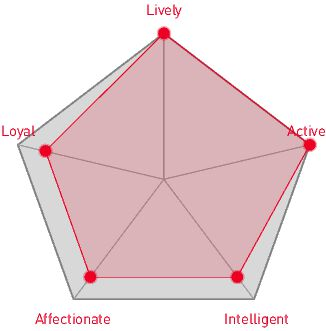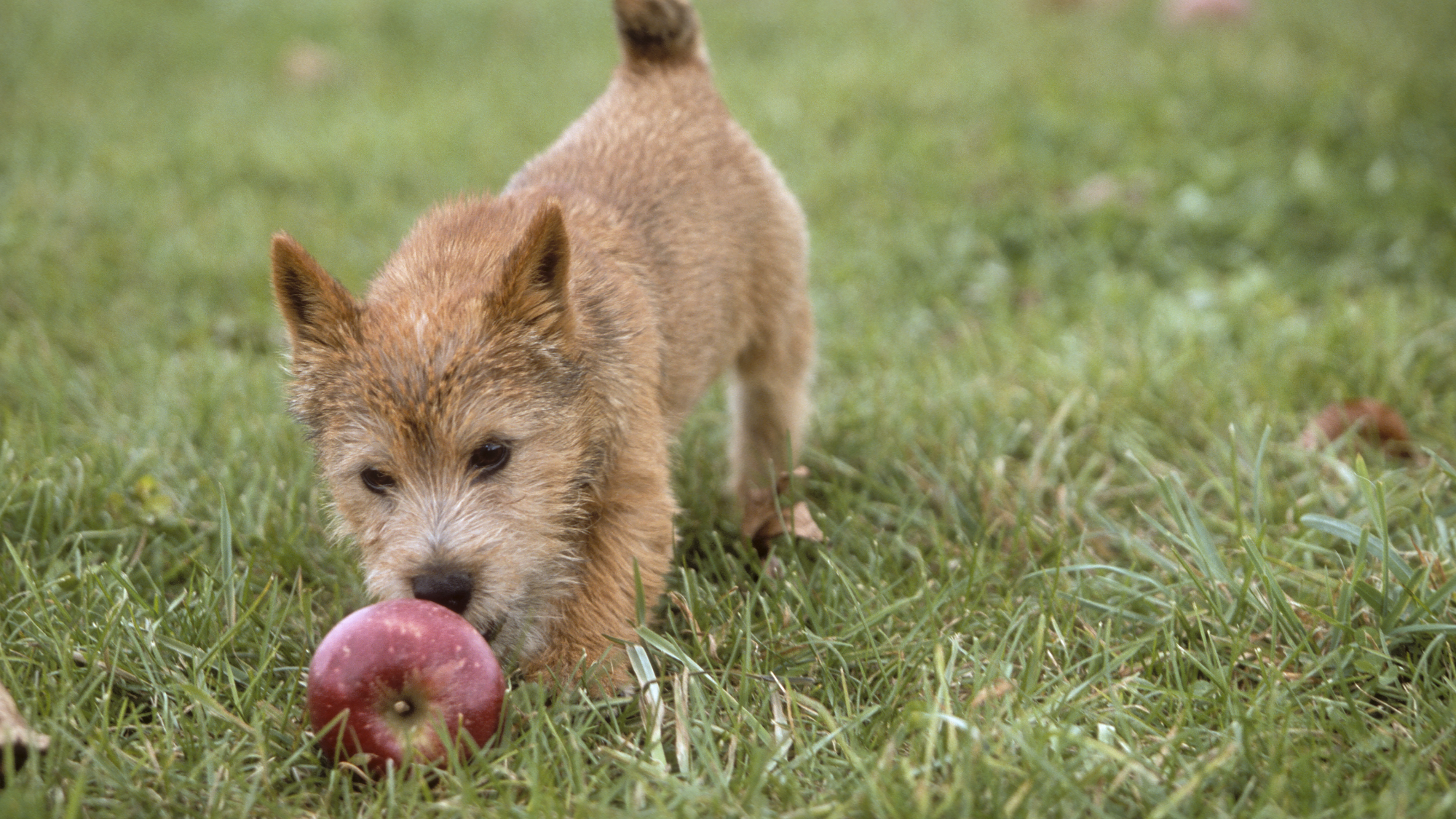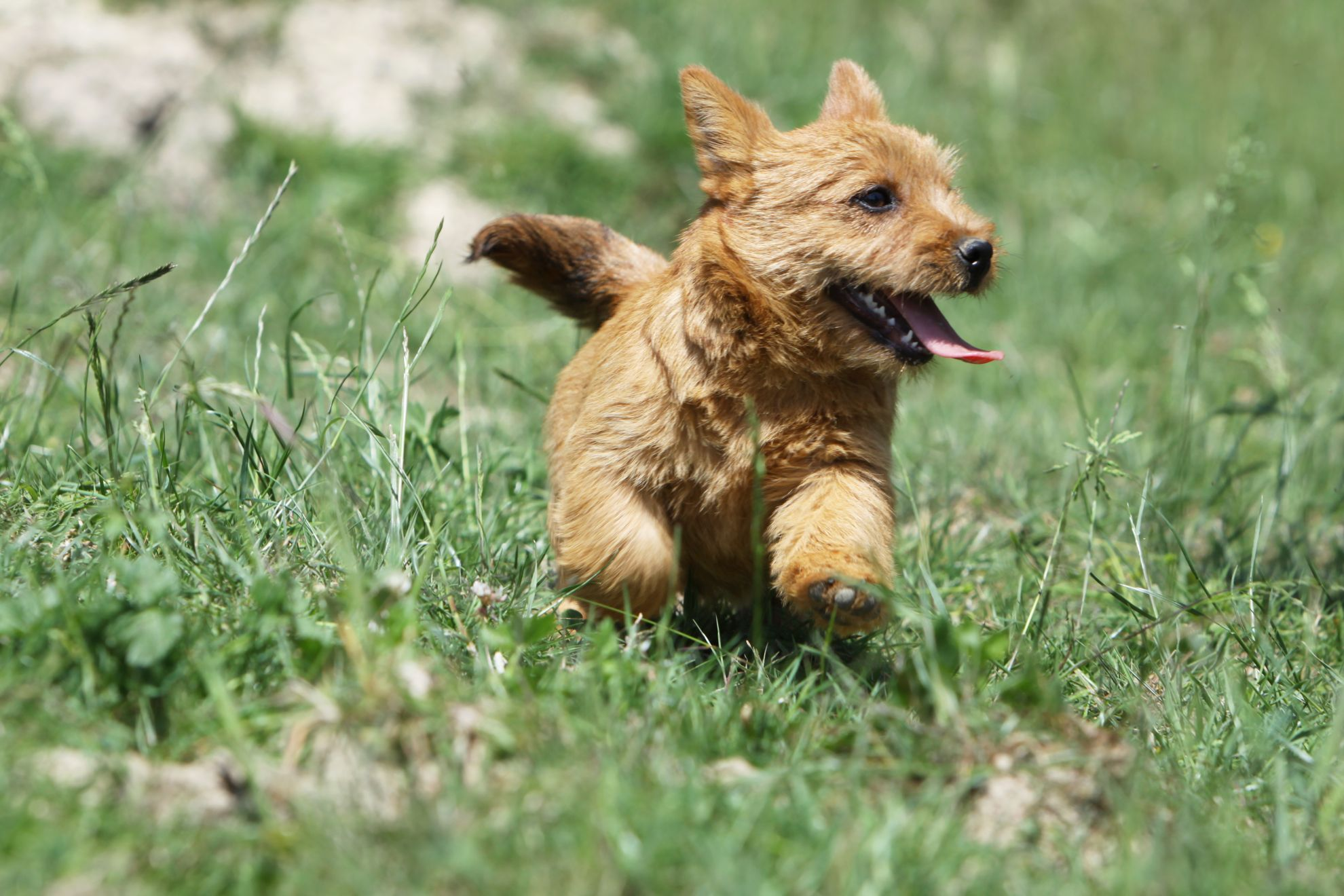Let's talk Norwich Terriers
The Norwich Terrier is an ace companion, and, if you haven’t noticed, downright adorable (check out those ears). Their charming appearance is one of many winning characteristics that have garnered the breed many devotees. The Norwich Terrier is fearless - at times even insistent - but that’s just because they want you to get in the game. Life is for frolicking, as far as the Norwich Terrier is concerned, with a romp in the yard or a simple cuddle on the couch, it’s all good.
Official name: Norwich Terrier
Other names: None
Origins: United Kingdom

| Drooling tendencies: |
|
Warm weather? |  |
| Shedding level: |  |
Suited to apartment living? | |
| Physical activity needs (high, low, medium): | Low to moderate | Kid-friendly? |
 |
| Compatibility with other pets: | Can stay alone? | 
|
We advise against leaving pets alone for long stretches.
Companionship can prevent emotional distress and destructive behaviour.
Speak to your veterinarian for recommendations.


| Baby age | Birth to 2 months |
| Puppy age | 2 to 10 months |
| Adult age | 10 months to 8 years |
| Mature age | 8 to 12 years |
| Senior age | from 12 years |

1/7
Get to know the Norwich Terriers
All you need to know about the breed
Standing only 25cm (10in) tall hasn’t prevented the Norwich Terrier from taking on life to the fullest, such is the verve and dynamism of this spirited breed. Bred like many terriers in England to root out rodents in towns and cities way back when, this trusty little dog is now valued for their jolly temperament and still-intact determination.
Their pint-sized stature however won’t prevent this dog from chasing small animals. Know that the Norwich Terrier has a high prey drive, and will chase most things that move. Giving them a good-sized yard and lots of daily walks will help burn off some of that terrier energy. This is a dog who defines “earnest” so don’t take for granted that small in stature means the same in energy level.
Those who know the breed however mark this trait as their most manageable, one that can easily be handled with a firm master and thorough training while they are young. The Norwich Terrier will take it all in stride, such is their buoyant and sociable approach to life. Expect a non-stop dog who gets along well with fellow canines and their feline compatriots alike.

2/7
2 facts about Norwich Terriers
1. Hungry, again?
Smaller breeds of dogs can at times have bigger appetites and the Norwich Terrier is no exception. They are known to be constantly hungry, with high energy that burns off calories easily. Make sure to feed your Norwich Terrier the same amount at each meal to guard against obesity, and take any treats out of their daily overall portion.
2. They stand alone
Today’s Norwich Terrier is a singular breed, with their distinguishing characteristic being their prick ears. It was this that set them apart from the Norfolk Terrier, who has dropped ears. Breeders in the 1930s pushed for two to become their own. They’re now completely distinct, with the ears as the differentiating characteristic, and recognised separately by England’s Kennel Club in 1964 and the American Kennel Club in 1979.
History of the breed
Few dogs can trace their lineage to a college campus but such is the background of the charming Norwich Terrier breed. They became all the rage with Cambridge students in the late 1800s as a trusty dorm room ratter, initially called Trumpington Terriers after having been obtained from a stable on Trumpington Street.
The breed flourished in Norwich as a steadfast vermin catcher, on fox hunts, and as a family companion. Norwich lies in the county of Norfolk, whose native Norfolk Terrier is often confused with the Norwich Terrier. The two are now completely distinct breeds, recognised separately by the American Kennel Club in 1979. The breed is now a darling of the show ring, with art imitating life with their turn in the movie Best in Show where a real-life champion played a Norwich Terrier named Winky.
They were admitted into The Kennel Club in 1932 and into the Fédération Cynologique Internationale in 1954.

4/7
From head to tail
Physical characteristics of Norwich Terriers
1. Ears
Triangular, pricked ears, set wide apart, pointed ends.
2. Body
Minute, compact body, short legs, vigorous constitution.
3. Coat
Double coat of wiry, close-lying outer coat, fairly dense undercoat, profuse around nose and eyebrows.

5/7
Things to look out for
From specific breed traits to a general health overview, here are some interesting facts about your Norwich Terrier

6/7
Caring for your Norwich Terrier
Grooming, training and exercise tips
The Norwich Terrier possesses a harsh, nearly weatherproof outer coat and a soft undercoat which provides insulation against all kinds of climes. The outer coat will need to be hand-stripped twice a year, which can be learned at home, or if you’re not so inclined, can be left to a groomer. Clipping or scissoring shouldn’t be done as it will cut off the coloured tips of the coat and cause the natural colours of wheaten, red, or black and tan to fade. Bathe only occasionally. Trim their nails to prevent infection and clean those perky ears often. Brush your dog’s teeth regularly, daily if possible, to prevent tooth decay. Exercise for the Norwich Terrier is a no-brainer: born explorers, they will readily bound outside for a walk or run around the yard. Be aware of your dog’s prey drive though, which is high. The Norwich Terrier is eager to please and responds best to positive training methods, especially when treats are involved (but take them out of their daily dose of kibble to avoid overfeeding). As with most breeds, starting them early on obedience will bring out the best behaviour in your Norwich Terrier.7/7
All about Norwich Terriers
The Norwich Terrier is a terrier through and through - meaning feisty and vigilant in almost all they do. Their need to express doesn’t go unnoticed and like all terrier breeds, they can get barky. The Norwich Terrier’s bark can be curbed with training in puppyhood, so they’ll know when to use it - and when not to.
Terrier breeds abound, the Norwich Terrier and Norfolk Terrier being two of the most popular but entirely distinct. The dogs share wiry coats and sturdy petite bodies with short legs but Norwich Terriers have prick ears that come to a point while Norfolk Terriers have drop ears that fold over softly. The Norwich Terriers’ coat is slightly harder, and the Norfolk Terrier’s feet are a little larger. Both are great dogs, just the same!
translations.feature.breeds.otherbreeds
Read more on this topic

How your dog's nutrition needs change with age

How to adopt a dog

Things to consider before getting a dog
Sources
1 - Veterinary Centers of America https://vcahospitals.com/
2 - Royal Canin Dog Encyclopaedia. Ed 2010 and 2020
3 - Banfield Pet Hospital https://www.banfield.com/
4 - Royal Canin BHN Product Book
5 - American Kennel Club https://www.akc.org/



